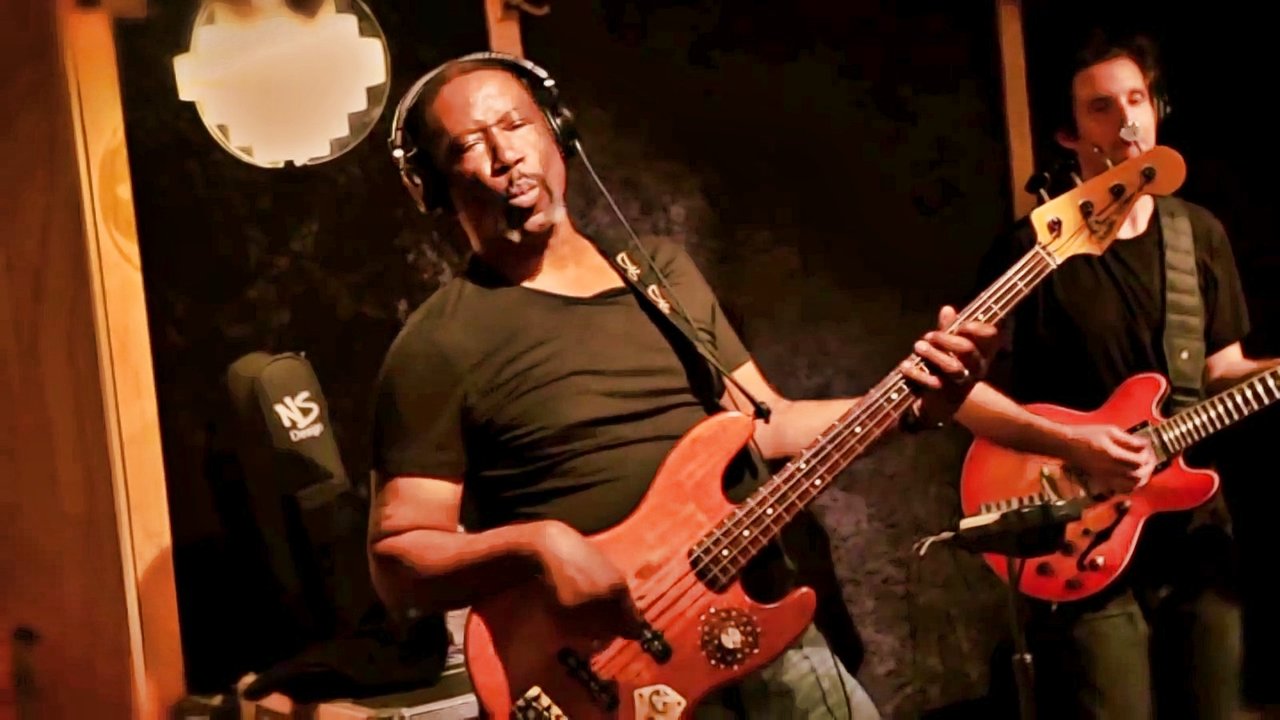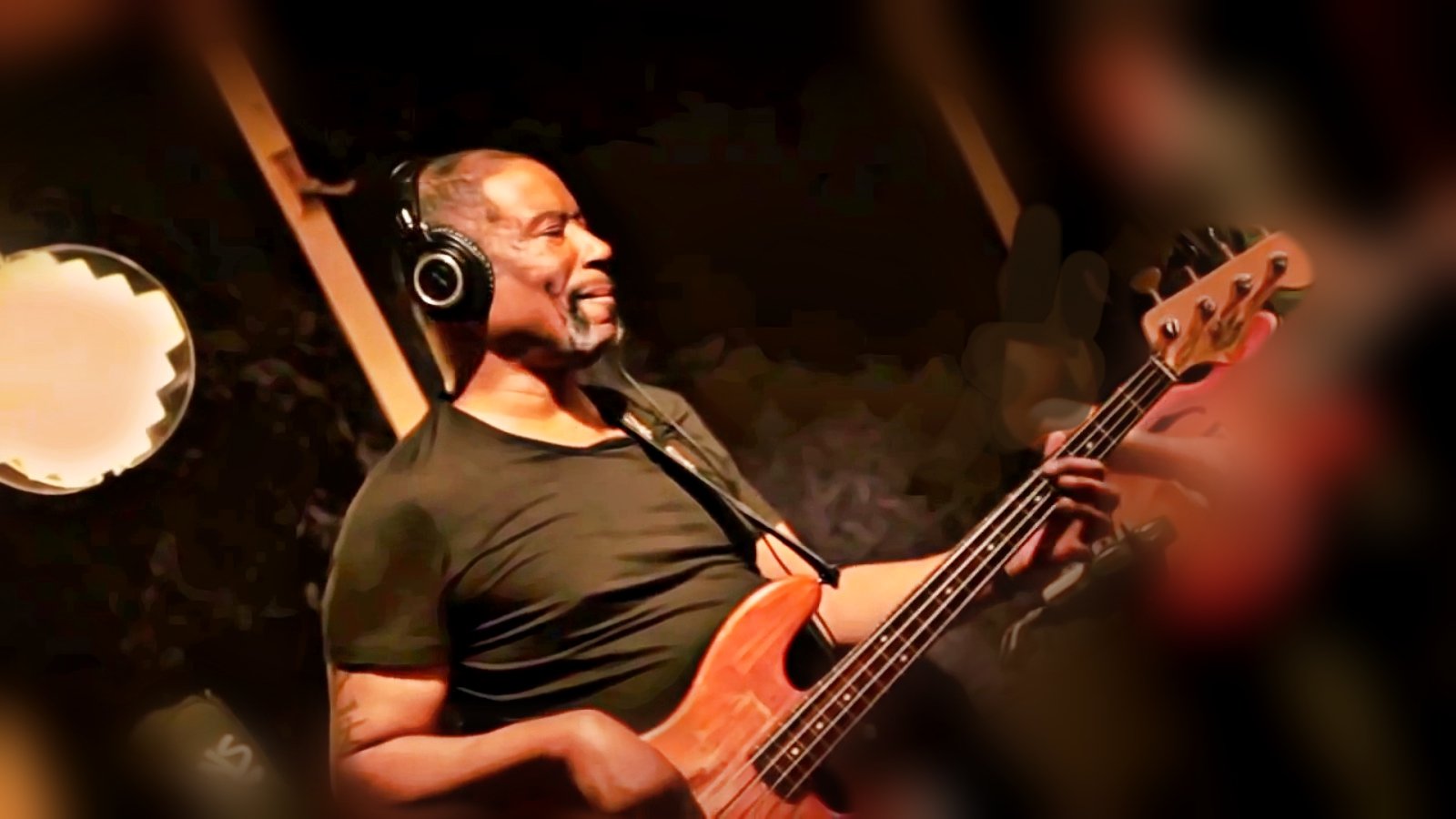Today we hear from the renowned bass player Jerry Jemmott, who had a front row seat to musical history.

 bitte s. Unten
bitte s. Unten
Introduction
Jerry Jemmott's groove is the bedrock of guitarist B.B. King's career defining hit, "The Thrill is Gone." He was also in the studio with Duane Allman and singer Wilson Pickett recording "Hey Jude," a track that was instrumental in launching the late Allman Brothers Band guitarist's musical career; and they were together again for flutist Herbie Mann's "Push Push" album. That was Duane Allman's first and only jazz sessions, and the last full album he recorded prior to his death in 1971. Jemmott was also there on December 13, 1968, when guitarist Mike Bloomfield called guitarist Johnny Winter (at the time an unknown), up onstage at the Fillmore East—a Friday the 13th that turned out to be Winter's lucky day.
Jerry Jemmott was with singer Aretha Franklin, the Queen of Soul herself, when she conquered San Francisco's hippie community at the Fillmore West in March of 1971. The album, drawn from this series of concerts (with a surprise appearance by singer Ray Charles), earned her a gold record, and was something she would later refer to as a highlight of her career.
Jerry Jemmott's blues credits are truly remarkable: in addition to B.B. King, Freddie King, Mike Bloomfield, Duane Allman, Otis Rush, Johnny Winter, Warren Haynes, and Derek Trucks, there's his legendary association with Cornell Dupree, Bernard Purdie, and King Curtis. In a previous interview, Jimmy Herring had this to say about him: "He's a genius, there's just nobody like him. He's the sound that defined an entire generation. I love Jerry Jemmott, it doesn't get any better than that."
Another of his seminal achievements, which will no doubt be watched by generations yet unborn, was his collaboration with Jaco Pastorius on the instructional video Modern Electric Bass (1985). Even beyond its instructional value, because it was done so close to Pastorius' death on September 21, 1987, it provides an invaluable insight into this extraordinary musician and composer. Pastorius had this to say about Jerry Jemmott: "He was my idol. That stuttering kind of bass line, bouncing all around the beat but keeping it right in the groove—well, they don't call Jerry the Groovemaster for nothing. He's the best."
In this extensive interview Jerry Jemmott speaks about all this, as well as his wide ranging session work for Atlantic Records, and his time in The Gregg Allman Band.
BB King – “The Thrill is Gone”
Alan Bryson: I want to ask first about the sessions with B.B. King for "The Thrill is Gone." When you guys finished and heard the playback, was it just another song that day, or did you have the feeling that this could become something momentous?

Jerry Jemmott: You have to look at it from our perspective. We came together to revolutionize his music, so it was with great intent that we set forth. We were thinking in terms of taking things apart and reconstructing the music so to speak. But it happened naturally through the selection of the people involved, starting with the contractor, Herb Lovelle. Earlier in the '60s he had worked with the same producer for Bob Dylan to make his music more accessible.
That's part of the reason you know Bob Dylan today, because of Herb and his partner, whose name escapes me right now, but they had a reputation around New York for being able to turn peoples' music around. So, for that reason, they called him to do the B.B. King sessions. He played the drums, Paul Harris was on keyboards, and Al Kooper was there—so we knew we were there for a reason. They had about 20 minutes of a live party album, but it wasn't enough for a full album, so they had the idea of coming into the studio.
In the studio you can construct things and make a memorable recording. So if you do something, you're thinking, let's make this the definitive version of the song. That's always my approach when I go into the studio. As it turned out, later I learned from B.B. that he'd been working on "The Thrill is Gone" going back six years prior to this session. He'd performed it live a few times, but he could never quite get it the way he wanted it.
He was comfortable letting us do our thing because the previous album had been successful and the song "Why I Sing the Blues" had gotten a lot of air play, so he was happy with that. So the next time we came together in the studio he brought in "The Thrill is Gone" and said, "Let's see what we can do with this."
It was Herb's idea to put strings on it.
Alan Bryson: Sometimes those string things can really transform a song. Like James Brown's "It's a Man's World," I've heard a version without the strings, and man, the strings really did the trick.
Jerry Jemmott: Oh for sure, without a doubt! Strings are beautiful.
Alan Bryson: Were the strings on "The Thrill is Gone" live with you guys?
Jerry Jemmott: No, that was Herbie Lovelle's idea, and Bert de Coteaux did the arrangement after the fact. Bert is great.
Alan Bryson: Oh man, those cellos are wild.
Jerry Jemmott: Yeah, what they would do in those days is pick up the rhythm parts and duplicate and amplify them. Then they would take the rhythm section down in the mix and you would hear the strings.
Alan Bryson: It's so cool, the way he did it, it's like a spontaneous dialog between you and the cellos.
Jerry Jemmott: Bert was phenomenal, he was able to pick up on that, and on the lines that Hugh McCracken was playing. That's their technique, it's called sweetening. Sometimes it's accentuating or it can be a call and response.
 Jerry Jemmott
Jerry Jemmott
Einführung
Jerry Jemmotts Groove ist der Grundstein für B.B. King's Karriere-definierenden Hit "The Thrill is Gone". Er war auch im Studio mit Duane Allman und Sänger Wilson Pickett für die Aufnahme von "Hey Jude", ein Track, der maßgeblich für die musikalische Karriere des verstorbenen Duane Allmans war. Sie spielten wieder für den Flötist Herbie Manns „Push Push“ Album zusammen. Dies war Duane Allmans erste und einzige Jazz-Sessions und das letzte vollständige Album, das er vor seinem Tod im Oktober 1971 aufgenommen hatte. Jerry Jemmott war auch am 13. Dezember, 1968 dabei, als der Gitarrist Mike Bloomfield den unbekannten Johnny Winter auf die Bühne des Fillmore East holte - ein Freitag der 13., der für ihn ein Glückstag war.
Jerry Jemmott spielt mit der Sängerin Aretha Franklin, der Queen of Soul selbst, als sie im März 1971 die Hippies von San Francisco im Fillmore West Theater verzauberte. Das Album, das aus dieser Konzertreihe stammt (mit einem überraschenden Auftritt von Sänger Ray Charles), bescherte ihr eine Goldene Schallplatte und war etwas, was sie später als einen Höhepunkt ihrer Karriere bezeichnen würde.
Jerry Jemmotts Blues-Credits sind wirklich bemerkenswert: Neben B. B. King, Freddie King, Mike Bloomfield, Duane Allman, Otis Rush, Johnny Winter, Warren Haynes und Derek Trucks gibt es seine legendäre Verbindung mit Cornell Dupree, Bernard Purdie und King Curtis. In einem vorherigen Interview hatte Jimmy Hering Folgendes über ihn zu sagen: "Er ist ein Genie, es gibt einfach niemanden wie ihn. Er ist der Sound, der eine ganze Generation definiert hat. Ich liebe Jerry Jemmott, es gibt nichts Besseres."
Eine weitere bahnbrechende Errungenschaft, die zweifellos noch von zukünftigen Generationen geschätzt wird, war seine Zusammenarbeit mit Jaco Pastorius auf dem Lehrvideo „Modern Electric Bass“ (1985). Auch über seinen Lehrwert hinaus, weil es so kurz vor dem Tod am 21. September 1987 von Pastorius stattfand, bietet es einen unschätzbaren Einblick in diesen außergewöhnlichen Musiker und Komponisten. Pastorius hatte folgendes über Jerry Jemmott gesagt: "Er war mein Idol. Diese „stotternde“ Art von Basslinie, die sich um den Beat herum bewegt, aber im Groove bleibt - nun, sie nennen Jerry den Groovemaster nicht umsonst. Er ist der Beste."
In diesem ausführlichen Interview spricht Jerry Jemmott über all das, ebenso über seine weitreichende Session-Arbeit für Atlantic Records und seine Zeit in der Gregg Allman Band.
Interview
BB King – "The Thrill is Gone"
Alan Bryson: Ich möchte zuerst nach den Sessions mit B.B. King für "The Thrill is Gone" fragen. Als ihr fertig ward und die Aufnahme gehört habt, war es an diesem Tag nur ein anderes Lied, oder hattet ihr das Gefühl, dass das etwas Bedeutsames werden könnte?

Jerry Jemmott: Du musst es aus unserer Perspektive betrachten. Wir kamen zusammen, um seine Musik zu revolutionieren, und somit hatten wir etwas Großes vor. Wir haben daran gedacht, Dinge auseinander zu nehmen und die Musik sozusagen zu rekonstruieren. Aber es geschah natürlich durch die Auswahl der beteiligten Personen, beginnend mit Herb Lovelle (er hat die Sessionspieler ausgewählt.) In den 60er Jahren hatte er mit dem gleichen Produzenten für Bob Dylan zusammengearbeitet, um seine Musik zugänglicher zu machen.
Das ist einer der Gründe, warum du Bob Dylan heute kennst, wegen Herb und seines Partners, dessen Namen mir momentan nicht einfällt. Sie hatten in New York einen guten Ruf, weil sie Musik zugänglicher machen konnten. Deswegen holten sie ihn für die B. B. King-Sessions. Er spielte selbst Schlagzeug, Paul Harris war auf Keyboards und Al Kooper war ebenfalls dabei - also wussten wir, dass wir aus einem bestimmten Grund dort waren. Sie hatten vorher ungefähr 20 Minuten eines Live-Party-Albums fertig, allerdings war das nicht genug für ein komplettes Album, also hatten sie die Idee, im Studio weiter zu machen.
Im Studio kann man Dinge konstruieren und eine besondere Aufnahme machen. Wenn du also etwas machst, denkst du, lass uns eine denfinitive Version des Songs machen. Das ist immer mein Ansatz, wenn ich ins Studio gehe. Wie sich herausstellte, lernte ich später von B. B., dass er sechs Jahre vor unserer Session an "The Thrill is Gone" gearbeitet hatte. Er hatte es ein paar Mal live gespielt, aber er konnte es nie so hinkriegen, wie er es wollte.
Er war damit zufrieden, uns unser Ding machen zu lassen, denn das vorherige Album war erfolgreich und das Lied "Why I Sing the Blues" wurde viel im Radio gespielt und er war deswegen damit zufrieden. Als wir das nächste Mal im Studio zusammenkamen, brachte er "The Thrill is Gone" mit und sagte: "Mal sehen, was wir damit machen können." Es war Herb's Idee, Streichinstrumente einzusetzen.
Alan Bryson: Manchmal können diese Streicher einen Song wirklich verändern. Wie James Browns "It's a Man's World", habe ich eine Version ohne die Saiten gehört, und Mann, die Saiten haben wirklich den Trick gemacht.
Jerry Jemmott: Oh sicher, ohne Zweifel! Saiten sind wunderschön.
Alan Bryson: Waren die Streicher von "The Thrill is Gone" live bei euch?
Jerry Jemmott: Nein, das war Herbie Lovelles Idee, und Bert de Coteaux hat das Arrangement nach der Aufnahme gemacht. Bert ist großartig.
Alan Bryson: Oh Mann, diese Celli sind super.
Jerry Jemmott: Ja, was sie damals getan haben ist, die aufgenommenen Rhythmus-Parts duplizieren und verstärken. Dann haben sie die Rhythmus-Sektion in dem Mix leiser gemacht und dadurch waren die Saiteninstrumente besser zu hören.
Alan Bryson: Es ist so cool, so wie er es gemacht hat, es ist wie ein spontaner Dialog zwischen dir und den Celli.
Jerry Jemmott: Bert war phänomenal. Das ist seine Technik, sie wird „sweetening“ genannt. Manchmal ist es akzentuierend oder es kann ein „Call“ und „Response“ sein.
Thanks for stopping by! You can visit my main page for more
Photos YouTube screen captures -- effects by @roused
The English version of my interview was first published on AllAboutJazz / German translation for Steemit by @roused
Check out Jerry Jemmott's website for books, DVDs,CDs



